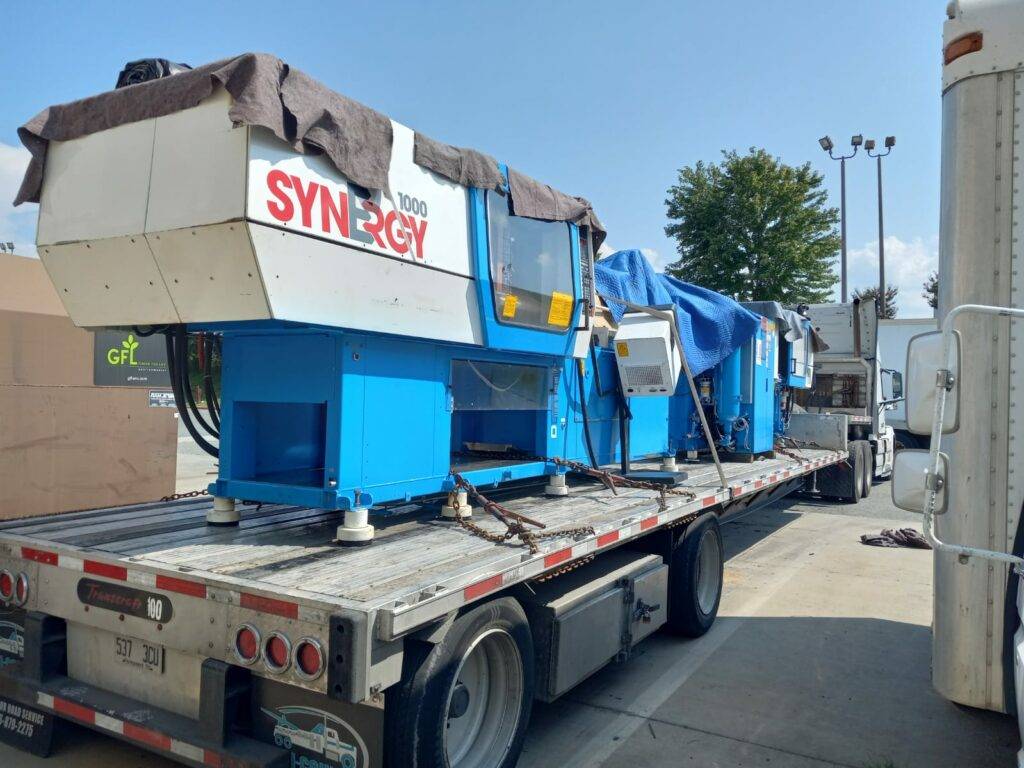Introduction
Shipping costs are one of those unavoidable expenses that can quickly add up, especially for businesses that ship frequently. Luckily, with some insider knowledge and a few simple strategies, you can significantly reduce those costs without compromising on efficiency or customer satisfaction. Below, we’ve compiled 30 genius tips to help you save money on shipping, covering everything from packaging hacks to logistical strategies. Whether you’re shipping LTL (Less-Than-Truckload), full truckload, or smaller parcels, these tips will have your shipping budget looking a lot healthier.
1. Become a Shipping Guru
The first step to saving money on shipping is understanding the industry inside and out. Shipping is more than just getting products from point A to point B—it’s a complex world of logistics, freight classes, weight considerations, and more. The better you understand the nuances of shipping, the more equipped you’ll be to avoid costly mistakes. Spend some time learning the terminology, the pricing models, and the common pitfalls in LTL, full truckload, and parcel shipping. You’ll be able to make smarter decisions that could save you a lot over time.
2. Repurpose Packing Materials
Did you know that you don’t always need to buy new packing materials? Chances are, you’ve got perfectly good bubble wrap, packing peanuts, and air pillows sitting around from previous shipments. Instead of tossing them out, stash them for reuse. This is not only a great way to cut costs, but it’s also a more eco-friendly option, reducing waste and promoting sustainability. Saving a little on packaging with each shipment can add up to significant savings over the long haul, especially if you ship often.
3. Skip Buying Boxes
Buying brand-new cardboard boxes may seem like the easiest option, but it’s far from the most cost-effective. Many businesses give away used boxes for free, and they often work just as well as new ones. Check out liquor stores, grocery stores, or even your local Starbucks—they frequently have boxes to spare and are happy to give them away. While you’re saving money, you’re also helping to reduce waste, which is always a win for the environment.
4. Schedule Pickups Strategically
One common mistake that many shippers make is scheduling a freight pickup before their shipment is fully prepared. Unlike calling a rideshare, where you can quickly run out the door, freight shipping requires more planning. If your shipment isn’t ready to go when the driver arrives, you may incur a costly “dry run” fee. Avoid these unnecessary charges by making sure your freight is completely packed and labeled before scheduling a pickup.
5. Understand the Difference Between Price and Value
It’s tempting to always go for the cheapest option when shipping, but sometimes the lowest price can actually cost you more in the long run. A higher upfront cost might come with added benefits like better customer service, faster delivery, or additional services like tracking and insurance. Think of it as an investment in peace of mind, especially when shipping valuable or fragile items. Choosing a service based on overall value rather than just price will often save you from expensive mistakes or delays down the road.
6. Audit Your Invoices Regularly
Shipping invoices can be more complicated than you might think. Mistakes happen—incorrect charges, overbilling, or extra fees you weren’t expecting. Take the time to review each invoice carefully. This might seem tedious, but it’s well worth it, as you could uncover errors that, when corrected, save you hundreds or even thousands of dollars over time.
7. Don’t Rely Solely on Freight Calculators
While online freight calculators are convenient, they don’t always provide the most accurate quotes. Freight costs are based on many factors, including dimensions, freight class, and additional services like liftgates. Calculators often miss these subtleties, which can lead to surprises on your final bill. When in doubt, talk directly to your carrier or broker for a more accurate quote.
8. Learn the Shipping Lingo
The world of freight is full of acronyms and confusing jargon. From NMFC codes to PODs, knowing the language of shipping can help you make better decisions and avoid misunderstandings. Not only will this prevent costly mistakes, but it also helps you navigate the process more efficiently.
9. Inspect Every Shipment at Delivery
When your shipment arrives, always inspect it thoroughly. Even minor damage should be noted on the delivery receipt, known as the Proof of Delivery (POD). If there’s damage and it’s not noted, you won’t be able to file a claim later, potentially losing out on compensation. A quick inspection can save you from costly losses.
10. Cut Down on Stated Shipping Costs
Customers hate paying for shipping, but there’s a way to ease the pain. Adjust your product pricing to include part of the shipping costs—customers will feel better about making a purchase if it looks like they’re getting “free” or reduced-cost shipping. It’s all about perception, and the psychology of a good deal can help boost sales while cutting your overall costs.
11. Shop Around for Volume Quotes
Not all volume freight quotes are created equal. Different carriers excel in different markets, whether by region, size, or type of product. Start looking for quotes early, and don’t hesitate to shop around until you find the best deal. Volume discounts can be significant, especially for businesses shipping large quantities.
12. Lighten the Load
The heavier your shipment, the more it’s going to cost. Be mindful of the materials you use for packing—lightweight options like air pillows or packing peanuts can help you reduce the total weight. If your packing materials are unnecessarily heavy, you’re likely paying more than you need to.
13. Master Freight Class
Freight class plays a huge role in determining the cost of your shipment. However, getting it wrong can be costly if your freight ends up reclassified. To avoid extra fees, take the time to understand how freight class works and ensure your shipment is accurately classified from the start.
14. Avoid Delivery Appointments
Whenever possible, avoid scheduling specific delivery appointments. Instead, give the carrier a larger delivery window so they don’t have to coordinate around your schedule. Carriers often charge extra for exact-time deliveries, and offering flexibility can save you from these additional fees.
15. Get Third-Party Shipping Insurance
Carriers often provide minimal insurance that doesn’t cover the full value of your goods, especially in cases of damage or loss. For high-value or fragile shipments, it’s worth investing in third-party insurance for peace of mind. In the unfortunate event of damage, having comprehensive insurance means you’ll be adequately reimbursed.
16. Consolidate Shipments
If you’re shipping multiple items, try to consolidate them into one shipment. By combining several small boxes into one larger package, you can reduce shipping costs, minimize the risk of loss or damage, and simplify tracking. Fewer packages mean less hassle and lower costs.
17. Pick Up Freight at the Terminal
Residential deliveries or liftgate services often come with additional fees. To save on these costs, consider picking up your shipment directly from the freight terminal. Just call the carrier to make the arrangement, and you could pocket significant savings.
18. Determine if Parcel or LTL is Better
For small shipments, parcel services like UPS or FedEx might be more cost-effective than LTL. On the flip side, if your shipment is large but doesn’t require a full truckload, LTL could save you more than parcel rates. Evaluate the size and weight of your shipment to make the best decision.
19. Use a Density Calculator
As freight class becomes increasingly dependent on density, using a density calculator is crucial. Density impacts your shipment’s cost, and inaccurate dimensions can lead to reclassification and higher fees. Ensure your density information is accurate to avoid unnecessary charges.
20. Hire a Freight Broker
Freight brokers have insider knowledge and established relationships with carriers, which allows them to secure better rates and provide support for claims, tracking, and more. Even if you’re an experienced shipper, a freight broker can offer insights and services that can make your life easier and your shipping costs lower.
21. Ship Early to Avoid Holiday Surges
Around the holidays, shipping tends to slow down, and expedited rates spike. To avoid costly delays and increased fees, aim to ship at least a week before peak holiday periods. Planning ahead can help you avoid the holiday rush and the higher prices that come with it.
22. Know Your Space Requirements
Whether you’re shipping LTL or truckload, always know exactly how much space your freight will take up. Misjudging your load’s dimensions can lead to paying for more space than you need—or worse, getting stuck without enough room. If you can “partial” your freight, even better—it’s a great way to save money by sharing truck space with other shippers.
23. Utilize Intermodal Shipping
If your shipment isn’t time-sensitive, intermodal shipping—using both truck and rail—can be a cost-effective option. Rail is typically cheaper than truckload, especially for long distances, and a freight broker can help coordinate the entire process.
24. Track Carrier Performance
Not all carriers are created equal, and one bad experience could cost you both time and money. Keep track of how each carrier performs, from on-time deliveries to customer service. Stick with the carriers who consistently deliver good service—forming strong relationships with reliable carriers can lead to better deals in the future.
25. Take Advantage of Backhauls
Truckload carriers often look for “backhaul” loads to avoid empty returns, which can result in significant savings for you. A good freight broker will know how to find carriers with backhaul availability, potentially cutting your shipping costs substantially.
26. Negotiate Shipping Rates
Most carriers are open to negotiation, especially if you’re a repeat customer. Regular shippers often qualify for discounts, so don’t hesitate to ask for lower rates. Establishing a long-term relationship with a carrier can also lead to more favorable pricing.
27. Use Dimensional Pricing for Small Parcels
Dimensional pricing, or DIM pricing, is becoming more common with parcel carriers. By optimizing your packaging and reducing package dimensions, you can cut down on costs. Always compare the weight vs. dimensions of your package to see which pricing model is more favorable.
28. Avoid Shipping on Fridays
Whenever possible, avoid scheduling shipments for Fridays. Carriers often charge more for weekend delivery or shipments held over the weekend. If you can, ship earlier in the week to avoid these surcharges.
29. Use a Freight Class Calculator
To ensure your shipment is classified correctly, use a freight class calculator before shipping. Incorrect classifications can result in costly reclassification fees. These calculators help you determine the accurate freight class based on weight, size, and density.
30. Look Out for Hidden Fees
Finally, always be on the lookout for hidden fees like liftgate charges, fuel surcharges, and residential delivery fees. Knowing about these in advance allows you to plan around them or negotiate lower rates.


